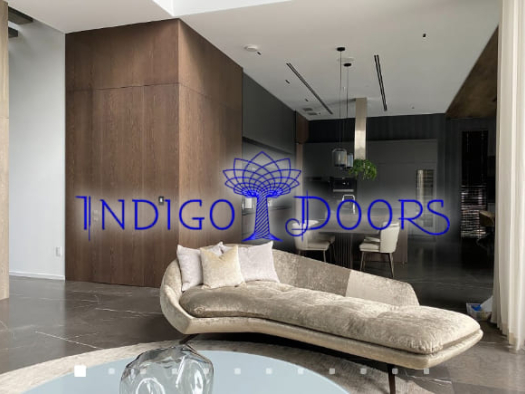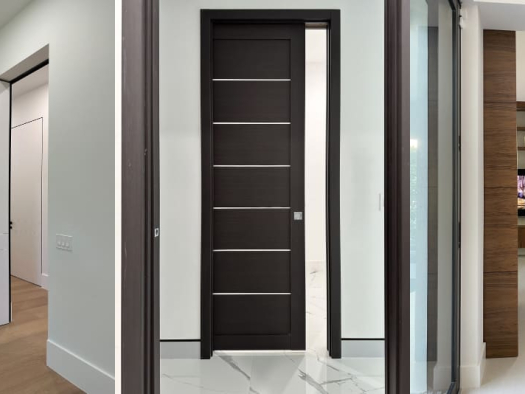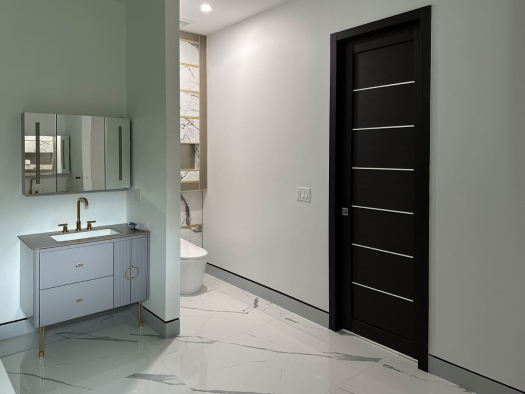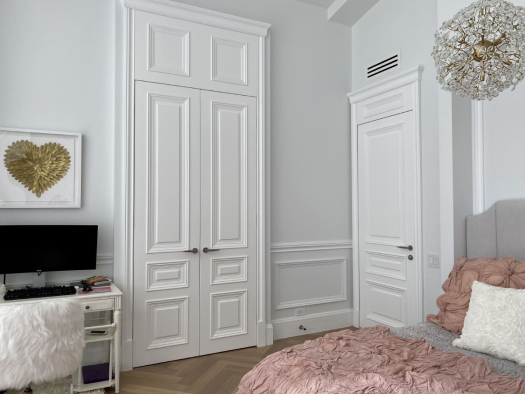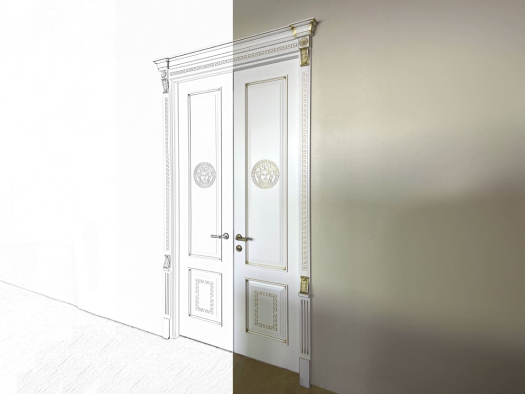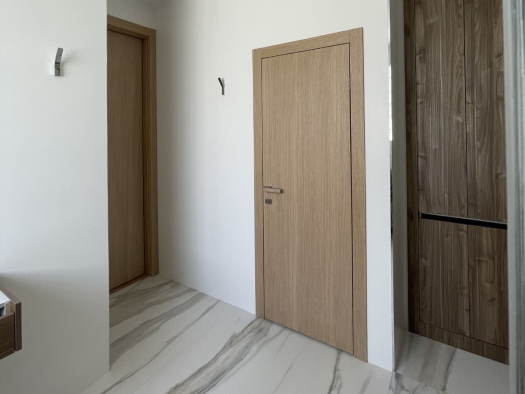- The Art of Milling: What is Milling and How is it Used in Doors
- Diversity of Designs: Popular Styles and Patterns for Milled Doors
- Custom Approach: Ordering Doors with Unique Milling
- Adding Texture and Volume: How Milling Affects the Visual Characteristics of Doors
- Functionality and Aesthetics: Practical Aspects of Using Doors with Milling
- Integration into the Interior: How to Choose Milled Doors that Harmonize with the Rest of the Home Decor
- Technologies and Materials: Modern Milling Methods and Their Impact on the Quality and Durability of Doors
- Exclusivity and Prestige: Why Milled Doors Become Symbols of Luxury and Sophistication in Interior Design
- Lighting Effects: How to Play with Light Effects on Milled Door Surfaces
Doors are an integral part of any interior; they not only provide privacy and security but can also become a key decorative element, giving a room a unique style and character. In this context, doors with milling serve as an elegant and refined solution, adding uniqueness and sophistication to the home interior. Combining functionality and aesthetics, they become not just a passage element but a true work of art capable of transforming space.
Milling is a surface processing technique used to create various patterns, reliefs, and decorative elements. Applied to doors, milling allows adding texture and volume, giving the surface an exquisite appearance. This process requires a professional approach and specialized equipment, ensuring high quality and precision execution.
The Art of Milling: What is Milling and How is it Used in Doors
Milling is a material processing technique based on the use of a special tool - a mill. With this tool, various patterns, knots, and reliefs are created on the material surface, giving it a unique appearance. In the context of doors, milling is used to add decorative elements to panels or frames, making the doors more attractive and refined.
One of the main advantages of milling is the ability to create various patterns and ornaments that can be adapted to any interior style. This allows each customer to choose doors that suit their tastes and preferences and integrate them into the overall room design concept.
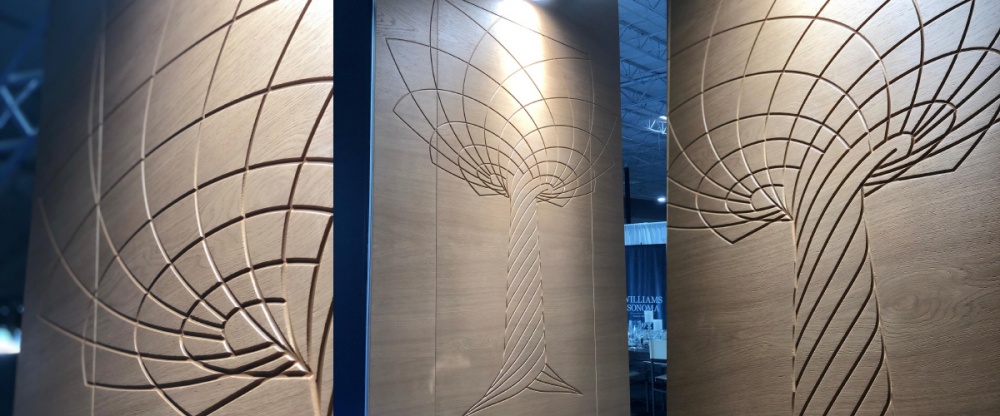
Diversity of Designs: Popular Styles and Patterns for Milled Doors
Milling opens up vast possibilities for realizing a wide range of design ideas. Among the popular styles for milled doors, classic, modern, art deco, rustic, and many others stand out. Each of these styles has its distinctive features and decorative elements that can be embodied through milling.
For example, classic interiors are characterized by graceful patterns and floral motifs such as rosettes, wreaths, and intricate designs. In modern style, preference is given to geometric shapes, abstract patterns, and minimalist decorative elements. Art deco, on the other hand, favors luxurious patterns, geometric figures, and textured surfaces.
Custom Approach: Ordering Doors with Unique Milling
A custom approach to ordering doors with unique milling provides customers with ample opportunities to materialize their design fantasies and preferences. Each customer has the option not only to choose the style and milling pattern but also to determine the material, finish, dimensions, and even the shape of the door.
One of the key advantages of custom ordering is the ability to create a door that fully corresponds to the characteristics and requirements of a specific interior. The customer can choose a pattern that harmonizes with the overall style of the room and accentuates its uniqueness. This allows for creating a door that becomes not just an element of the interior but its main focal point and adornment.
In addition to choosing the pattern and style, the customer can also specify the material from which the door will be made. Wood remains one of the most popular materials due to its natural beauty and warmth. However, there is also the option to choose other materials such as glass, metal, or plastic, depending on the customer's preferences and the features of the interior.
The finishing of doors can also be adapted to the individual preferences of the customer. From matte to glossy, from natural to artificial, the finish helps to emphasize the style and character of the door, as well as create the necessary aesthetic effect in the interior.
The dimensions and shape of the door can also be adjusted according to the customer's requirements and the features of the room. This allows for creating a door that perfectly fits into the architectural features of the interior and ensures maximum convenience of use.
Thus, a custom approach to ordering doors with unique milling opens up wide possibilities for customers to create their dream door that will meet all their expectations and requirements. Thanks to this, everyone can create an interior that reflects their individuality and style, making it truly unique and distinctive.
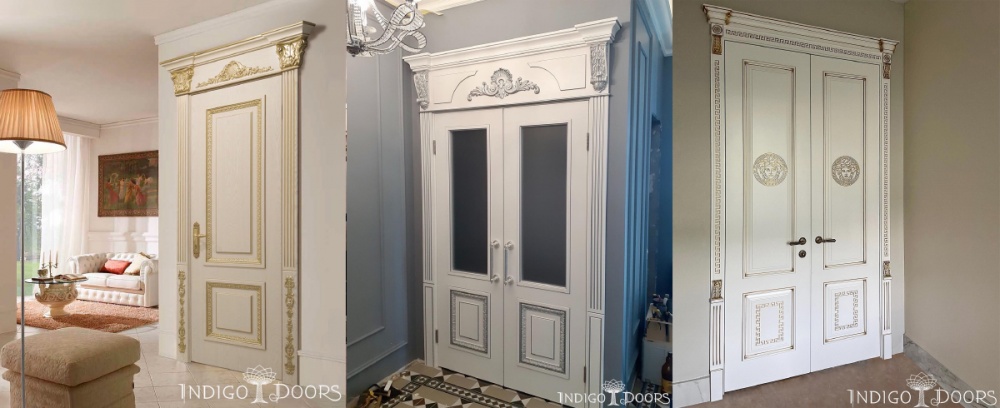
Adding Texture and Volume: How Milling Affects the Visual Characteristics of Doors
Adding texture and volume through milling plays a key role in changing the visual characteristics of doors, making them more attractive and unique. Milling allows for creating various patterns, ornaments, and reliefs on the surface of doors, giving them a special charm and elegance.
One of the important aspects of milling's impact on the visual characteristics of doors is adding texture. Textural patterns created through milling give doors a tangible surface that can be smooth and even, or more rough and textured. This creates a sense of depth and volume, making the doors more interesting and appealing to the eye.
Additionally, milling allows for adding visual volume to the surface of doors. This is achieved by creating various reliefs, protrusions, and indentations that skillfully play with shadows and light, giving the doors a more dynamic and lively appearance. Such an effect helps to make the interior more expressive and stylish, drawing attention to details and creating a cozy atmosphere.
It's important to note that milling can also be used to create the effect of depth and perspective on the surface of doors. This is achieved by creating certain patterns or compositions that create the illusion of space and volume. Such doors add a special charm and sophistication to the interior, making it more attractive and unique.
Thus, milling plays an important role in changing the visual characteristics of doors, making them more attractive and aesthetic. Adding texture and volume through milling creates a unique effect that helps to emphasize the style and character of the interior, making it more expressive and cozy.
Functionality and Aesthetics: Practical Aspects of Using Doors with Milling
In addition to visually transforming the interior, doors with milling also offer practical advantages. They can serve as both a decorative element and a functional part of the interior, providing reliable space division and maintaining room privacy. Moreover, milling can be used to create additional ventilation or decorative elements such as handles and locks.
Doors with milling also boast high strength and durability, making them an excellent choice for home use. The materials used in the manufacturing of such doors are usually of high quality and resistant to external influences, ensuring their long service life.
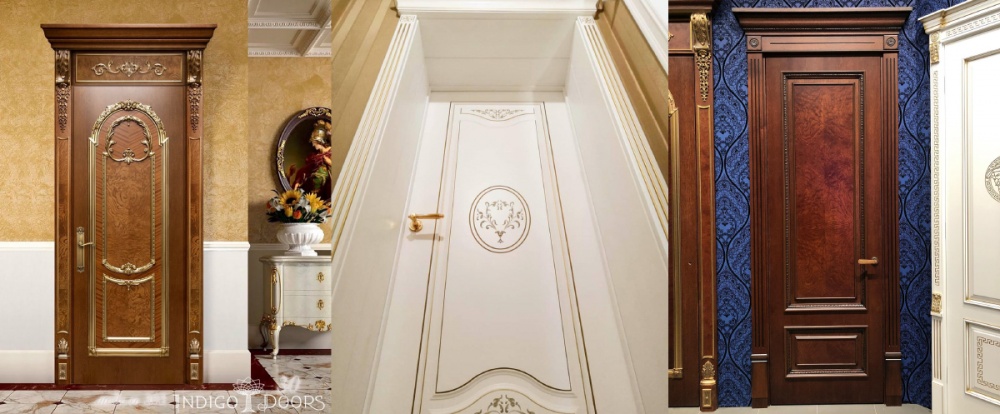
Integration into the Interior: How to Choose Milled Doors that Harmonize with the Rest of the Home Decor
When choosing milled doors for your home, it's important to consider the overall interior style and coordinate them with other decor elements. For example, doors with intricate patterns and ornaments executed in traditional styles would be suitable for a classic interior. Conversely, modern interiors can be complemented with doors featuring minimalist patterns or geometric forms.
It's also essential to consider the color scheme and materials used in the interior. Milled doors can be selected to harmonize with wall finishes, furniture, and flooring, creating a cohesive and unified look for the space.
Technologies and Materials: Modern Milling Methods and Their Impact on the Quality and Durability of Doors
With the advancement of technology, door milling has become even more precise and efficient. Modern methods allow for creating complex and intricate patterns while maintaining their clarity and execution quality. Additionally, the use of modern materials and equipment ensures high strength and durability of milled doors.
One of the key materials for manufacturing milled doors is wood. Wooden doors possess natural beauty and warmth, making them a popular choice for many interiors. However, there are also other materials such as glass, metal, or plastic that can be used to create milled doors in modern interiors.
Exclusivity and Prestige: Why Milled Doors Become Symbols of Luxury and Sophistication in Interior Design
The exclusivity and prestige of milled doors have become an integral part of modern interior design, and this can be attributed to several key factors.
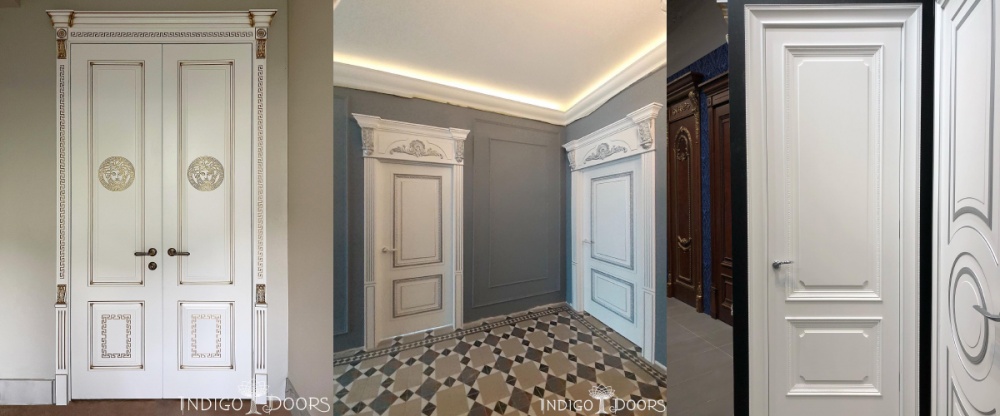
- Firstly, milled doors represent a luxurious and refined design element that lends a special grandeur and elegance to the interior. Milling allows for the creation of unique patterns, ornaments, and reliefs, giving the doors a luxurious appearance and making them true works of art. Such doors become not just functional elements but central focal points of the room, attracting attention and creating an impression of luxury and sophistication
- Secondly, milled doors are symbols of high status and prestige. Their exclusive design and high-quality execution make them luxury items that accentuate the taste and style of the owner. Owning milled doors becomes a kind of status symbol, reflecting the wealth and sophistication of the owner and allowing them to emphasize their individuality and uniqueness.
- Moreover, milled doors are often associated with luxurious interiors and expensive homes, making them objects of special attention and desire. Their presence in the interior creates an atmosphere of luxury and sophistication, making the space more attractive and prestigious. Such doors become not just decorative elements but true symbols of status and prestige, adding a special charm and attractiveness to the interior.
Thus, the exclusivity and prestige of milled doors make them an integral part of modern interior design, symbols of luxury and sophistication. Their presence in a room accentuates the taste and style of the owner, creates an atmosphere of prestige and high status, and makes the interior more attractive and prestigious.
Inspiration Examples: Ideas for Using Milled Doors in Various Interior Projects
Milled doors can be utilized in various interior projects, adding a unique charm and elegance to spaces. For example, they can be used in living rooms to divide spaces, in bedrooms to create an atmosphere of luxury and coziness, and in entryways to add decorative elements and originality.
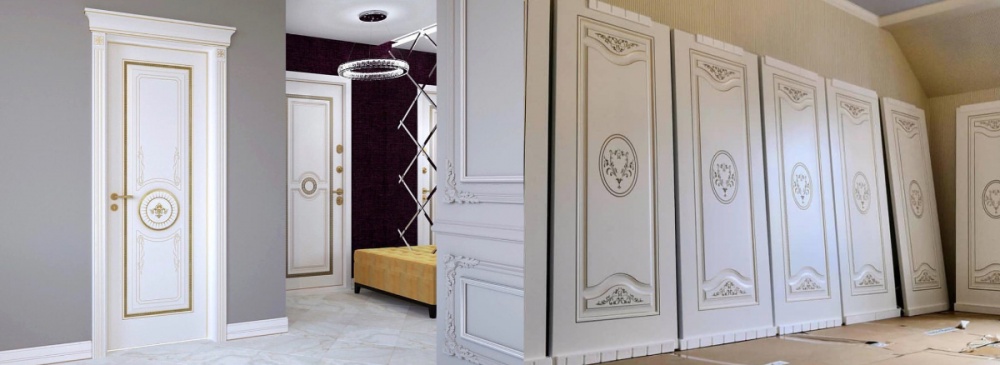
Creative Approach: Ideas for Creating Your Own Milled Door Design
One of the most exciting aspects of milled doors is the opportunity to create your own unique design. Clients can draw inspiration from various sources such as nature, art, architecture, and create patterns and ornaments that reflect their individuality and style.
Unique Solutions: Examples of Non-standard and Creative Milled Doors in Interior Design
The market offers a plethora of non-standard and creative solutions for milled doors that are capable of surprising and inspiring. For instance, doors with milled patterns in the form of geometric shapes, abstract compositions, or even photorealistic images of nature. Such doors can become true focal points in the interior, attracting attention and creating a unique atmosphere in the space.
Lighting Effects: How to Play with Light Effects on Milled Door Surfaces
Milling not only adds texture and volume to the surface of doors but also opens up opportunities for creating interesting plays of light and shadow. With proper lighting, milled patterns and reliefs can create unique effects, emphasizing their beauty and sophistication.
Playing with light on milled surfaces can be achieved using various lighting sources: natural light from windows, built-in LED lamps, or directional fixtures. This allows highlighting each detail of the pattern and creating amazing interplays of light and shadow, giving the doors a special allure and mystery.
Milled doors become not just functional elements of the interior but true works of art capable of transforming ordinary spaces into unique and elegant environments. Their variety of designs and styles, individual approach to customization, as well as the possibility of playing with texture and light, make them an indispensable element of modern interior design. Thanks to milled doors, everyone can create a cozy and stylish space that reflects their individuality and tastes.

